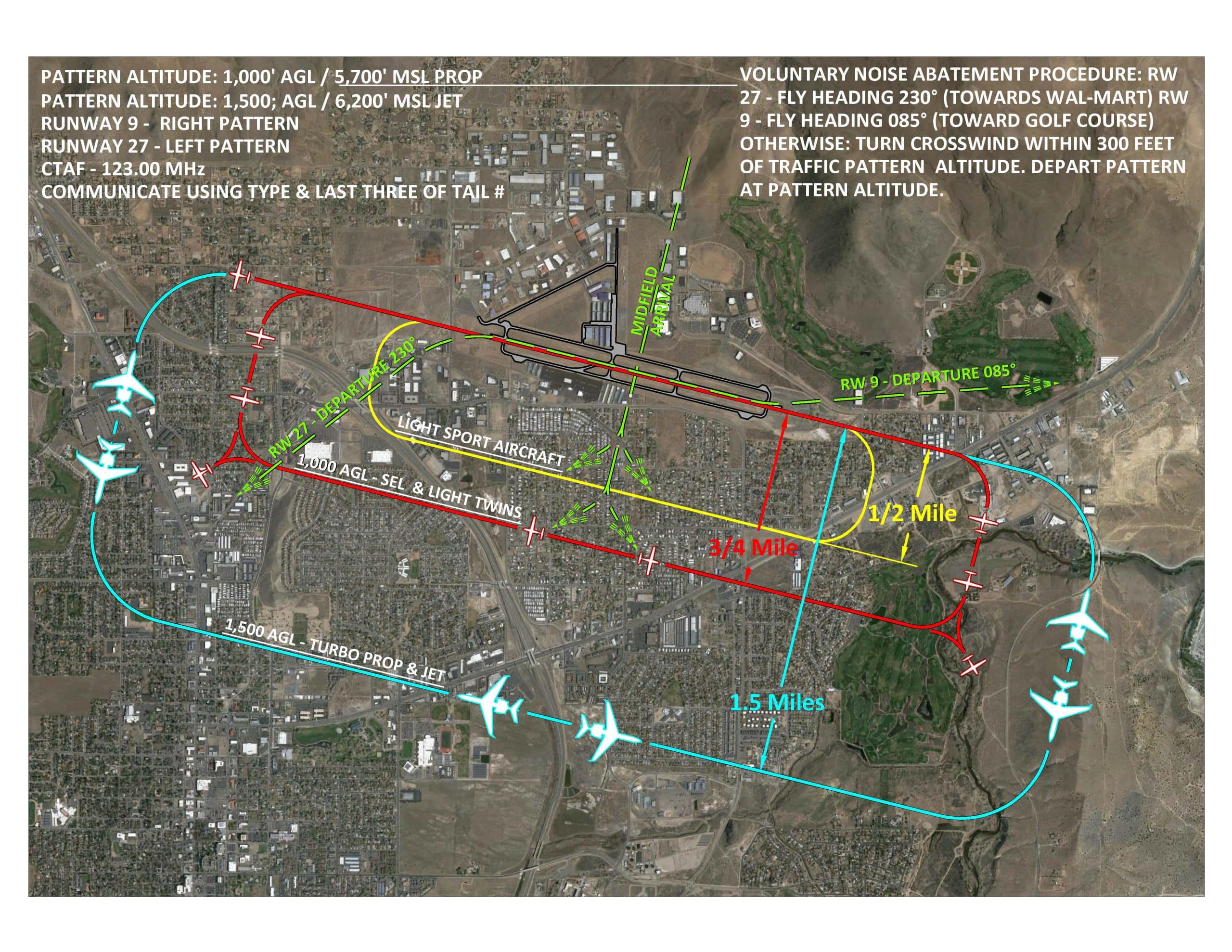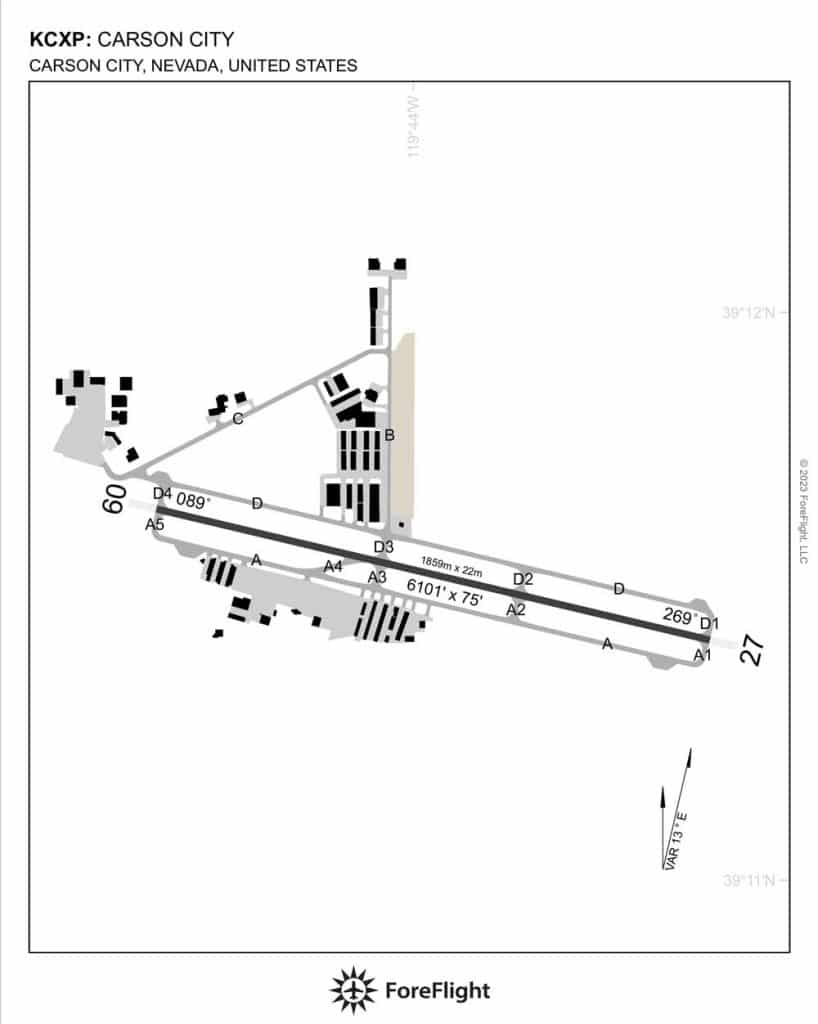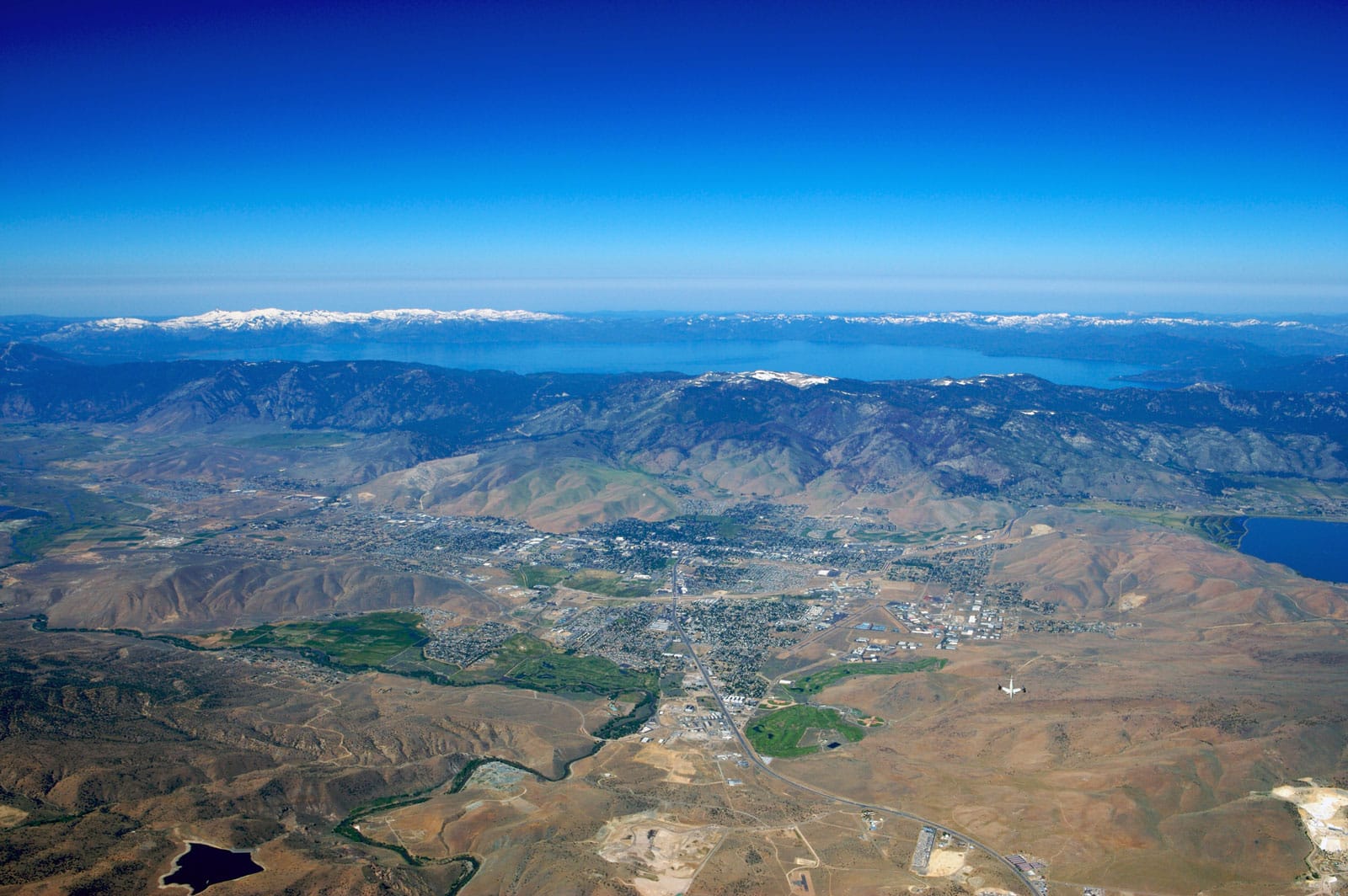CARSON CITY AIRPORT (KCXP)
Voluntary Noise Abatement
Runway 9: Aircraft are requested to turn to a heading of 085 after takeoff and maintain that heading until crossing Highway 50.
Runway 27: Aircraft are requested to turn to a heading of 230 after takeoff and maintain that heading until crossing Carson Street (old Highway 395). Runway use is dictated by wind conditions. Ideally, it is desirable for aircraft to land directly into the wind. Prevailing wind flow is from the west-southwest leading to a greater use of Runway 27.
NOTE: Runway 27 is the designated runway during calm wind conditions.

Runway Information
- Runway 9-27
- Runway Length (feet) | 6,100
- Runway Width (feet) | 75
- Runway Surface Material | Asphalt | Grooved
- Runway Load Bearing Strength (pounds) | 30,000 SWL/60,000 DWL
Airfield Lighting
- Identification | Rotating Beacon
- Runway 9/27 | Low/Medium/High Intensity
- Taxiway A | Medium Intensity
- Taxiway B and C | Reflectors
- Taxiway D | Medium Intensity
- Approach | Precision Approach Path Indicators (PAPI)
(RWY 9 and 27) - Runway End | Threshold and Runway End Identifier Lights
(REIL) (RWY 9 and 27)
Pavement Markings
- Runway | Visual, Holding Position Markings
Navigational Aids
- RNAV GPS-A l Mustang VOR (FMG)

Mountain Flying

The Carson City area offers diverse terrain, blending both rugged landscapes and more urbanized regions. As a pilot considering flying a small Cessna there for the first time, here’s what you should know:
1. **Mountainous Terrain**: Carson City is situated near the Sierra Nevada mountain range, which features peaks reaching elevations of over 10,000 feet. Expect rugged terrain with steep slopes and valleys, which can affect wind patterns and create turbulence, especially in areas with narrow canyons and passes.
2. **Valleys and Basins**: Despite the mountainous surroundings, Carson City itself lies in a valley basin, providing relatively flat terrain for takeoff and landing. However, be mindful of sudden changes in elevation as you approach surrounding mountainous areas.
3. **Weather Considerations**: The Carson City region experiences a mix of weather conditions, including hot, dry summers and cold winters with occasional snowfall. Mountain wave turbulence can occur, particularly when strong winds blow over the Sierra Nevada range.
4. **Airport Facilities**: Carson City Airport (KCXP) serves as the primary general aviation airport in the area. It features a single asphalt runway (9/27) measuring 6,100 feet in length, suitable for small aircraft like the Cessna. Be sure to familiarize yourself with airport procedures and any local regulations.
5. **Navigational Challenges**: While the terrain offers stunning scenery, it can also pose navigational challenges, especially for pilots unfamiliar with the area. Pay attention to prominent landmarks and use navigational aids such as GPS and VOR stations to maintain situational awareness.
6. **Wildlife Awareness**: The Carson City area is known for its diverse wildlife, including birds of prey and other bird species, coyotes, deer, and elk. Exercise caution, especially during takeoff and landing, to avoid potential bird strikes and incursions with wildlife on the runway.
7. **Altitude Considerations**: Given the varying elevations in the region, be prepared to adjust your flight plan and performance calculations accordingly, especially when operating at high density altitudes.
Overall, flying into Carson City can be a rewarding experience, offering breathtaking views of the Sierra Nevada mountains and surrounding landscapes. However, it’s essential to approach your flight with thorough preparation, respect for the terrain, and awareness of potential challenges unique to the area.
